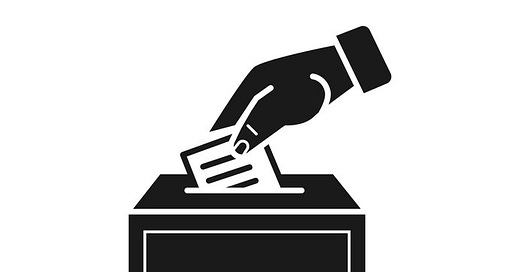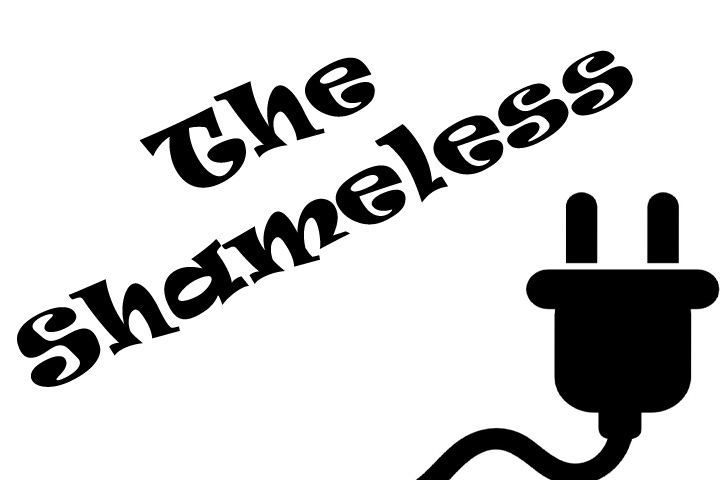Issue #172 American History November 8, 2022
This issue is longer than usual, but this topic is more important than usual. Thank you for reading it in its entirety.
No intrusive ads or annoying popups ever! Instead, please see the important information at the bottom of this post. That’s how we grow and sustain this publication. AND, please keep those “Likes” and comments coming! Thanks!
Save 48% with an annual subscription! Limited Time Only!
Changes to Voting Over the Centuries in America
In 2022, barriers to fair and equal voting and vote counting are growing and spreading faster than at any time since the passage of the Voting Rights Act of 1965. However, keeping certain segments of the American population from voting has been a part of American History since the founding of this country.
When the United States Constitution was ratified in 1787, the only group given the right to vote was white men with property. Over the next few decades, the voting agency was extended to all white men, everyone else was excluded.
After slavery was abolished in December 1865 by the 13th Amendment and voting rights were supposedly guaranteed to all U.S. citizens in 1870 by the 15th Amendment, the efforts to preserve voting rights to only white men continued and only increased for decades after.
Reminder: until the 19th Amendment was ratified in 1920 giving full citizenship to women, only native-born and naturalized white, Mexican, and Black men were considered “citizens.” Mexican Americans were offered citizenship after the end of the Mexican-American War in 1848. Native Americans were finally granted citizenship in 1924 with the passage of the Indian Citizenship Act, and Asian Americans did not achieve full citizenship rights until the Immigration and Naturalization Acts of 1952 and 1965.
How People Voted in the 17th, 18th, and 19th Centuries
During the first several decades after this country’s founding, election days were set by the individual states and the exact Election Day varied. In 1845, a law was passed that set a standard day for federal elections, and the provisions of that law were soon extended to congressional elections as well.
There are several reasons why general elections every two years are held on the first Tuesday after the first Monday in November:
Until the late 19th and early 20th centuries, America was primarily an agrarian country. After spending the majority of the year planting and harvesting crops, November was chosen as the best month because the harvest season was over and the weather was still relatively mild in most areas.
Most people still lived in rural areas, and it often took most of a full day to travel to the polling place and back.
Although the First Amendment specifically states that Congress can make no law respecting an establishment of religion or prohibiting its free exercise, many laws and traditions in the United States were and are based on Christianity. Therefore, because Christians decided that Sunday was to be set aside as a day of worship and rest, traveling to vote on that day was eliminated, and people traveled to vote on Mondays.
In those times (and still today), Wednesdays were considered “market days” for the farmers to sell their crops, so the farmers needed to be back home by Wednesday. So, with Sunday and Monday eliminated, and Wednesday set as when everyone needed to be back home, it was decided that Tuesday was the best day to vote.
The “first Tuesday after the 1st Monday” was chosen for two reasons to ensure that Election Day would not fall on November 1:
Many Christians observed November 1 as “All Saints Day.”
Many merchants and farmers settled their books on the first day of every month, so they needed to be at the farm or their place of business on the 1st day of the month.
Voting in the 20th and early 21st Centuries
Although by the early 20th century, more Americans were living in cities than on farms or in rural areas, and many had access to reliable mass transit and even owned cars, the “first Tuesday after the first Monday in November” was set as Election Day. Many of those who worked in the cities could still rather easily get to the nearby polls after work before the polls closed at 8 pm.
The old-school voting machines tallied the votes when the voter “pulled the lever” to open the curtains to their voting booth, and later, ballots that were filled out by hand by filling in circles were relatively easily scanned and tabulated. This made it easy to declare a winner by 11 pm Eastern Time, even though Alaska and Hawaii were in farther timezones and voting was still going on and their votes were still being counted.
Mail-in voting for deployed members of the military has been in effect since the Civil War, and “Americans Abroad,” a voting bloc which is composed of the millions of American citizens living outside the United States, have been able to vote absentee/mail-in for decades. The citizens of the state of Oregon decided to implement complete mail-in voting in 1998.
It wasn’t until a Black American was elected president twice and by large popular vote and Electoral College margins, and Republicans realized that they had lost the popular vote in seven of the last eight presidential elections, that the right wing stepped up its efforts to suppress the votes of anyone who did not vote for their candidates.
In 2013, after Barack Obama won his 2nd election, Republicans sued then-Attorney General Eric Holder. Also, the majority right-wing Supreme Court, in an opinion written by Chief Justice John Roberts, gutted the majority of the 1965 Voting Rights Act with the Shelby County (Alabama) v Holder decision.
After the Democrats regained control of the House of Representatives in 2018, and after Republicans lost the presidency and control of both houses of Congress in 2020/2021, the extreme right-wing Trump supporters and the Republican Party, in general, started enacting severe voting rights obstacles to ensure that they would be declared the winner of every local, state, and national election no matter what the actual will of the voting public decided.
Changes to “Election Day” Voting in Recent Years
While the “first Tuesday after the first Monday” was a relatively convenient Election Day for more than two centuries, today less than 2% of Americans live on farms or in rural areas, and transportation to polling locations is readily available to almost everyone.
Today, most Americans work on Tuesdays, including white women who went into the workforce by the millions in the 1970s and beyond. Getting to the polls before or after work is often more difficult than it needs to be, especially since Republicans have closed polling locations in mostly Democratic and/or minority areas on purpose.
In 2020, absentee/mail-in voting increased substantially, primarily due to the COVID-19 pandemic that was still waging at that time and vaccinations were not yet available.
Although there have been calls for making Election Day a federal holiday, or moving Election Day to a weekend day, those initiatives have largely failed.
The biggest change in voting patterns, especially since 2018, has been adding “early voting” options and increased absentee/mail-in voting functionalities in many areas, often starting in September, a full two months before the official Election Day.
In many jurisdictions, “Election Day” has morphed into “Election Season.” Secure, although “unmanned” mailbox-like drop boxes for submitting absentee ballots have become widely available, and many Black churches hold “Soles to the Polls” events on the Sundays before Election Day, encouraging their congregations to go vote after morning services. Many colleges and universities are promoting and encouraging their on-campus students to vote in their adopted towns instead of their hometowns.
These initiatives made it easier for everyone to vote but they were most beneficial to people who tend to vote Democratic, and of course, the Republicans couldn’t have that.
How Republicans are planning to subvert the will of the people in the 2022 midterms and beyond
For months, the Republicans have planned to “declare victory” for their candidates in the midterm elections even if they do not win the most votes. The majority of Republicans have outright declared that they will not accept the results of any election they do not win, and they have put in place several initiatives to subvert or just refuse to count Democratic votes.
Over 300 Republican candidates at every level are “election deniers,” meaning they refuse to accept that President Joe Biden legally won the 2020 election. If elected, many of them have promised to only count Republican votes in the 2024 election.
Republicans have removed many of the drop boxes in Democratic areas.
Republicans have tried to have armed “guards” monitor drop boxes and from voters using those boxes in many areas, especially in Arizona.
Republicans are trying to discard mail-in ballots from Democratic areas, and/or making it difficult for voters to repair any small errors in their mail-in ballots, and/or trying to cut off the counting of mail-in ballots after 8 pm on Election Day, even though they passed laws that mail-in ballots could not even be processed or counted until or after Election Day.
Republicans are spreading the false premise that only the votes counted by 11 pm on Election Day can be included in the results, hoping that the “Red Mirage” that shows that more Republicans voted than Democrats on the actual Election Day should mean that vote counting should just stop so that they can declare themselves the winners.
We’ll see what happens on and after Election Day. Many races won’t legally and completely be decided until days or even weeks after November 8, 2022
Join us in the “We Are Speaking” Chat Room! (iOS app only; coming to the Android app soon.)
Download the app by clicking this link or the button below. Chat is only on iOS for now, but the chat feature is coming to the Android app soon. In both apps, you can always read, listen to, and view all of your favorite Substack writers in one place on your phone or tablet.
Open the app and tap the Chat icon. It looks like two bubbles in the bottom bar, and you’ll see a row for my chat inside.
That’s it! Jump into my thread to say hi.
Important Follow-Up Information
What has been your experience in the 2022 Midterm election season? Let us know in the comments.
Help us to grow “We Are Speaking!”
Subscribe or adjust your subscription to receive the “Find Out In Fifteen” Branding and Marketing Podcast for the Global Creative Community
Please support us: subscribe for free or upgrade your current subscription to a paid level for only 31¢ per issue or less. We publish 32 issues per month.
You can also subscribe or adjust your subscription to only receive notifications of the W.A.S. Weekly Summary Newsletter (instead of daily emails):
Please check out the products and services of the TeamOwens313 Global Creative Community Branding and Marketing Academy (GCC BMA) for independent writers and creative professionals. We offer three different options: Silver Level: online training and networking, Gold Level: a creative networking community with monthly training and coaching, and Platinum Level: 6-week or 10-week one-on-one coaching.
Visit our website for complete information:






